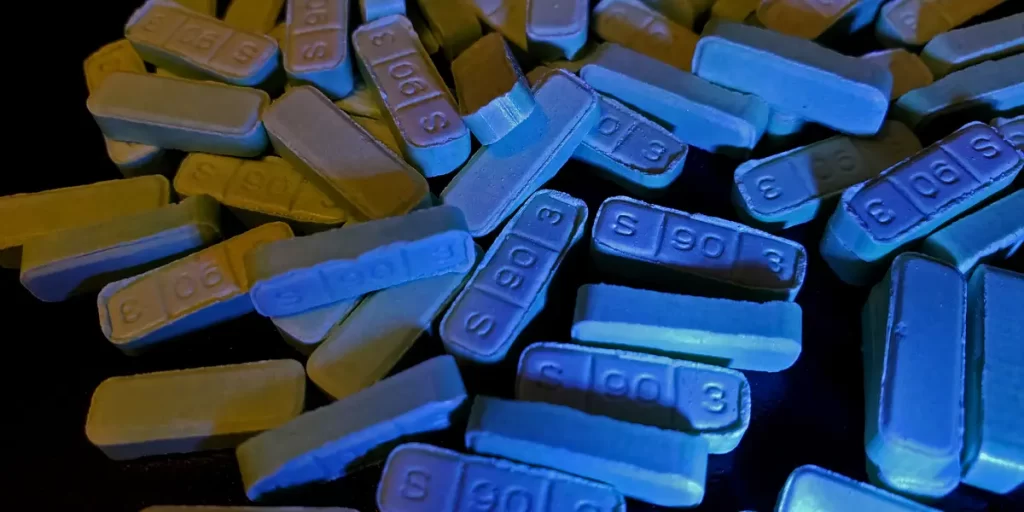Xanax Withdrawal and Detox
Written by Thomas Christiansen
& Medically Reviewed by Maureen McNulty
Medically Reviewed
Up to Date
Last Updated - 6/17/2022
View our editorial policy
Xanax is a benzodiazepine medication that is prescribed for anxiety. The drug increases the activity of certain proteins in brain cells, which leads to sleepiness or relaxation. Xanax is only meant for temporary use. However, because the drug can be habit-forming, some people continue to use it more often or longer than recommended. Other people take Xanax as a party drug. Because of its “downer” effects, some people use it as a way to “come down” from the high they achieved through using stimulants, like cocaine, or to lessen withdrawal symptoms from alcohol abuse.
Taking Xanax puts people at high risk of developing dependence. This development happens when the body changes the way it functions because of the continued presence of a drug. When people become dependent on Xanax, they will find it hard to go without using the drug. If they stop or decrease their dose, they may have Xanax withdrawal symptoms.
People who use Xanax at higher doses or more frequently than their doctor recommends and people who use Xanax recreationally have a much higher chance of becoming dependent on the drug. If someone wants to stop using the medication, they will have to go through Xanax detox to flush the drug out of their system. This process is potentially dangerous, and doctors recommend detoxing under medical supervision.
Symptoms of Xanax Withdrawal
What does Xanax withdrawal feel like? Detoxing from Xanax is not usually life-threatening, but it can be uncomfortable. Some Xanax withdrawal symptoms may cause harm. People may experience:
- Headaches
- Trouble concentrating and remembering things
- Feeling anxious, irritable, aggressive or depressed
- Blurry vision
- Sensitivity to noise or light
- Sweating
- Muscle tremors, shaking, twitching or cramping
- Numbness in the hands or feet
- A decrease in appetite, which may be accompanied by weight loss
- Diarrhea
- Vomiting
- Insomnia
- Seizures
These symptoms tend to come and go very quickly, and a mild side effect can turn severe in a short time. This factor is part of what can make withdrawal dangerous. Additionally, some side effects of Xanax withdrawal can cause lasting damage. For example, a lack of coordination can cause falls in older adults and seizures can cause brain damage.
When Xanax is used recreationally, it is often combined with other substances. People who are detoxing from multiple substances might have more severe symptoms. The severity of withdrawal can also depend upon a person’s age, physical and mental health, Xanax tolerance level, the typical dose of Xanax and the length of time they used the drug for.
Xanax Withdrawal Timeline
Xanax is a short-acting benzodiazepine. That means that the rate at which it is cleared from the body is relatively fast. Its half-life in the body, which refers to the amount of time it takes to excrete half of the drug, is 11 hours.
How long does Xanax withdrawal last? Symptoms usually begin within a day and their severity peaks within one to four days. While withdrawal from most substances consists of symptoms steadily decreasing over time, Xanax withdrawal can be more unpredictable, with side effects coming and going over the course of several days. Most of the symptoms will go away within one or two weeks.
The Xanax withdrawal timeline extends a little bit longer for some symptoms. Some people who go through withdrawal from benzodiazepines, including Xanax, develop Post-Acute Withdrawal Syndrome (PAWS). This happens when people have anxiety symptoms off and on over the course of months or years. People experiencing PAWS can cope by getting mental health treatment, such as counseling.
Dangers of Xanax Withdrawal
Some people may try to detox off Xanax cold turkey and abruptly stop using the drug. However, this can be unsafe and ineffective. Some of the risks of quitting Xanax cold turkey include having more uncomfortable symptoms and increasing the chances of having seizures. Also, the vast majority of people who try this method end up relapsing because it is hard to deal with symptoms. In particular, people may have strong feelings of anxiety and panic that can only be lessened by taking more Xanax.
Doctors prefer to gradually taper people off Xanax. Tapering involves slowly reducing a person’s dose over time. This method takes longer — in severe cases of Xanax addiction, tapering may last 8 to 12 weeks. However, this technique is safer and will result in people having milder withdrawal symptoms. Tapering shouldn’t be attempted without medical supervision. This process can cause dangerous changes in blood pressure, heart rate and body temperature. When health care providers manage drug tapering, they can monitor a patient’s health and intervene when symptoms become dangerous.
Xanax Detox
A medical detox program can help people withdraw from Xanax use safely. Medical detox is a treatment plan where people can detox at a facility and have access to around-the-clock medical care and receive treatment for addiction. Doctors who know how to detox from Xanax safely can give patients medications to ease the process. Medical detox often involves diazepam or another long-lasting benzodiazepine. Switching from Xanax to a different related drug can make tapering easier and the withdrawal process smoother. Health care providers will often give patients other types of treatment to ease symptoms, such as medications to help with anxiety, nausea, headaches and muscle cramps. Medical detox is also a good fit for people who have been mixing substances and may need to withdraw from several at once. People looking for Xanax withdrawal help should consider enrolling in a detox program to increase their chances of a successful recovery.
Finding a Detox Center in Washington or Oregon
Detox alone doesn’t usually help a patient refrain from using Xanax again in the future. The most effective way to prevent setbacks in sobriety is to begin other forms of treatment, like outpatient rehab, therapy or support groups, following detox. These treatment options may also include care for mental health disorders. If someone first started taking Xanax because of mental health symptoms, then these symptoms may come back after detox. Health care providers can provide other forms of treatment to help patients manage these symptoms. A good Xanax detox center will be able to provide physical and mental health treatment for people who are withdrawing.
If you or a loved one struggle with Xanax use, contact The Recovery Village Ridgefield to speak with a representative about how professional addiction treatment can address substance use disorders alongside any co-occurring mental health disorders. You deserve a healthier future, call today.
Sources
Food and Drug Administration. “Xanax.” August 23, 2011. Accessed September 12, 2019.
Medline Plus. “Alprazolam.” September 15, 2017. Accessed September 12, 2019.
National Institute on Drug Abuse. “What classes of prescription drugs are commonly misused?” Misuse of Prescription Drugs, December 2018. Accessed September 12, 2019.
World Health Organization. “Chapter 4: Withdrawal Management.” 2009. Accessed September 12, 2019.
View Sources
Food and Drug Administration. “Xanax.” August 23, 2011. Accessed September 12, 2019.
Medline Plus. “Alprazolam.” September 15, 2017. Accessed September 12, 2019.
National Institute on Drug Abuse. “What classes of prescription drugs are commonly misused?” Misuse of Prescription Drugs, December 2018. Accessed September 12, 2019.
World Health Organization. “Chapter 4: Withdrawal Management.” 2009. Accessed September 12, 2019.
Authorship







